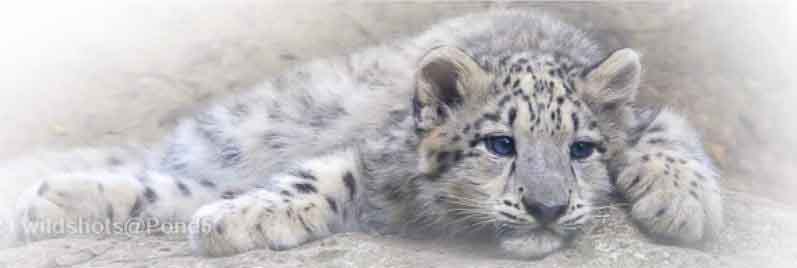Discounted video footage

The snow leopard (Panthera uncia), also known as the ounce, is a felid in the genus Panthera native to the mountain ranges of Central and South Asia. It is listed as Vulnerable on the IUCN Red List because the global population is estimated to number fewer than 10,000 mature individuals and is expected to decline about 10% by 2040. It is threatened by poaching and habitat destruction following infrastructural developments. It inhabits alpine and subalpine zones at elevations from 3,000 to 4,500 m (9,800 to 14,800 ft), ranging from eastern Afghanistan, the Himalayas and the Tibetan Plateau, to southern Siberia, Mongolia and western China. In the northern part of its range, it also lives at lower elevations.
Snow leopards die of Covid-19 complications at Nebraska zoo (read the CNN article)
Taxonomically, the snow leopard was long classified in the monotypic genus Uncia. Since phylogenetic studies revealed the relationships among Panthera species, it has been considered a member of that genus. Two subspecies were described based on morphological differences, but genetic differences between the two have not been confirmed. It is therefore regarded as a monotypic species. The snow leopard differs from the other Panthera species by a shorter muzzle, an elevated forehead, a vertical chin and a less developed posterior process of the lower jaw. It cannot roar despite its partly ossified hyoid bone, as its 9 mm (0.35 in) short vocal folds provide little resistance to airflow.
Snow leopards become sexually mature at two to three years, and normally live for 15–18 years in the wild. In captivity they can live for up to 25 years. Oestrus typically lasts from five to eight days, and males tend not to seek out another partner after mating, probably because the short mating season does not allow sufficient time. Paired snow leopards mate in the usual felid posture, from 12 to 36 times a day. They are unusual among large cats in that they have a well-defined birth peak. They usually mate in late winter, marked by a noticeable increase in marking and calling. Females have a gestation period of 90–100 days, and the cubs are born between April and June. A litter usually consists of two to three cubs, in exceptional cases also up to seven.
